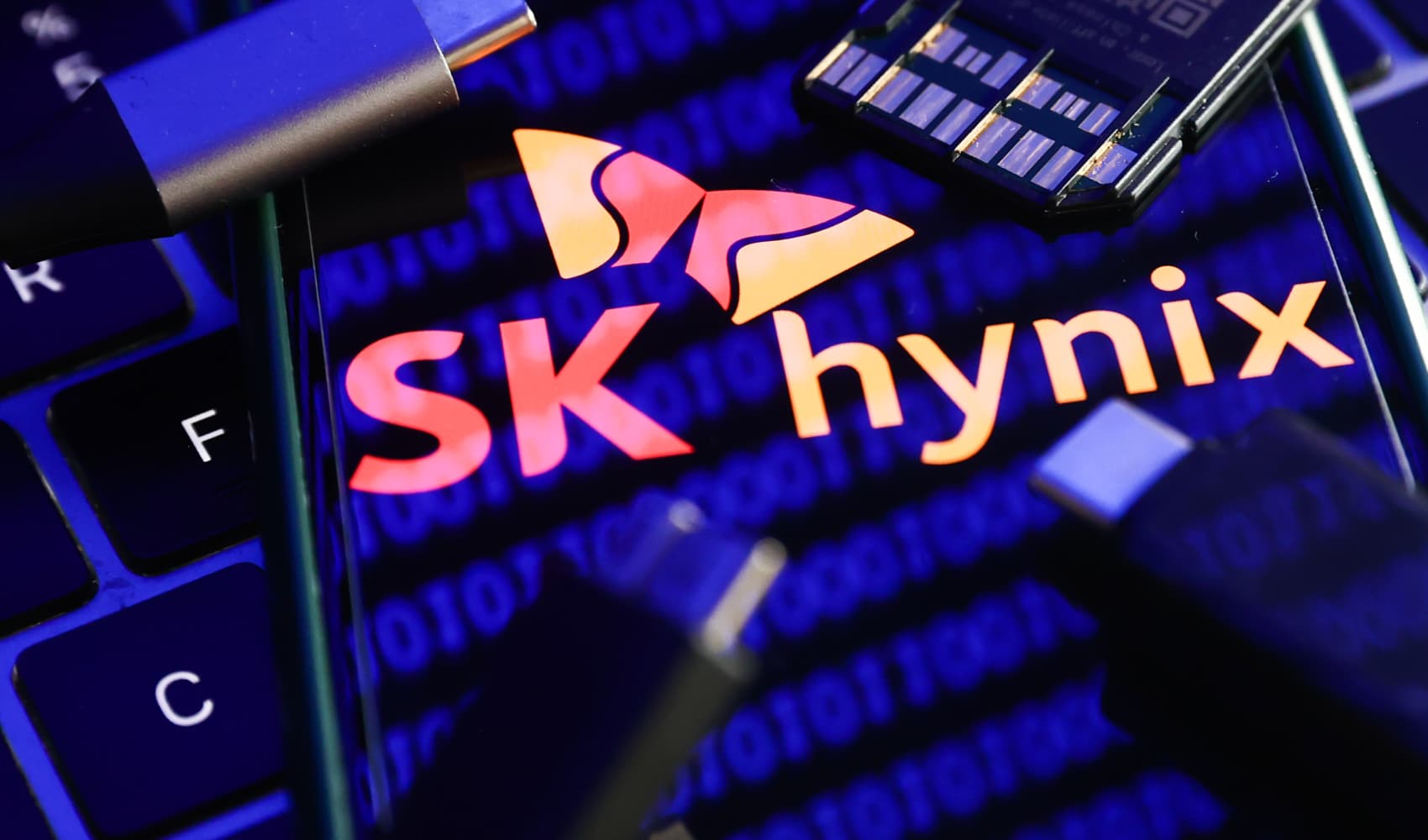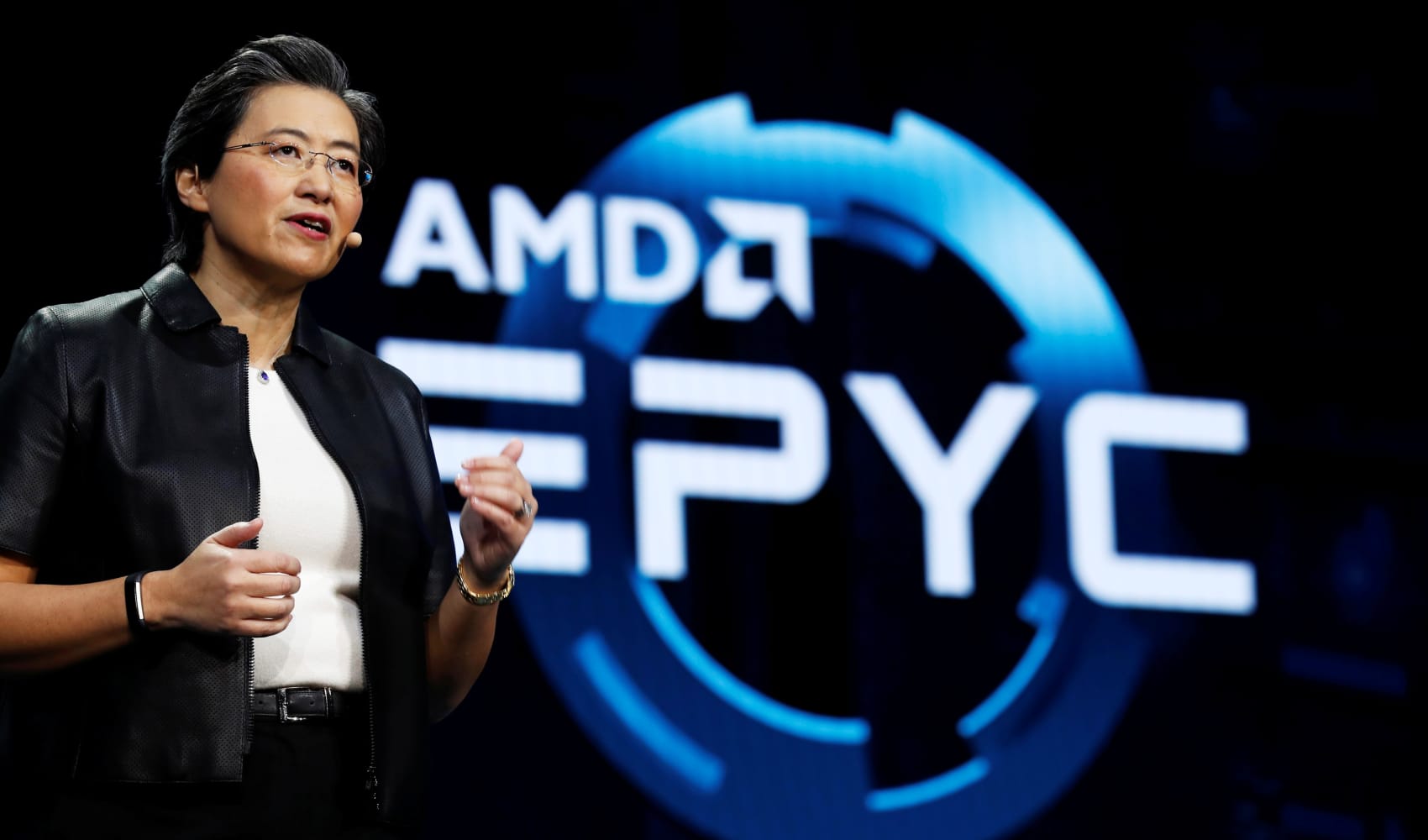SK Hynix: AI Boom Profits, Demand Volatility Warning
SK Hynix's AI-Fueled Profit Surge: A Volatility Warning?
Introduction: Riding the AI Wave, But Is the Tide Turning?
SK Hynix, a major supplier to Nvidia, just dropped a financial bombshell: a whopping 158% surge in quarterly operating profit. The reason? The insatiable demand for their high bandwidth memory (HBM) chips, the very stuff that powers the artificial intelligence revolution. But amidst the champagne popping, a word of caution was issued: demand volatility. So, is this a case of smooth sailing or a looming storm on the horizon? Let's dive in!
SK Hynix's Stellar Q1: Numbers That Pop
The numbers speak volumes. Forget whisper numbers; these are shout-from-the-rooftops numbers. Let's break it down:
- Revenue: 17.64 trillion won ($12.36 billion) – beating estimates of 17.26 trillion won.
- Operating Profit: 7.44 trillion won – crushing estimates of 6.62 trillion won.
That's not just incremental growth; that's a leap. It's like going from riding a bicycle to piloting a rocket ship. But before we get too carried away, let's look at the full picture.
Year-on-Year Growth: A Massive Jump
Compared to the same quarter last year, the picture is even brighter:
- Revenue soared by about 42%.
- Operating profit exploded by 158%.
This is the AI boom in action. It's a clear indicator that the demand for AI-related hardware is not just hype; it's a real, tangible economic force.
Quarter-on-Quarter Performance: A Slight Dip
Now for the reality check. While the year-on-year numbers are dazzling, the quarter-on-quarter figures paint a slightly different story:
- Revenue dropped by 11%.
- Operating profit fell by 8%.
Why the dip? This is where the "demand volatility" warning comes into play. Short-term fluctuations are inevitable in any market, but the semiconductor industry is known for its cyclical nature. Is this just a minor blip, or an early warning sign of a broader slowdown?
The AI Boom: Fueling SK Hynix's Fortunes
Let's be clear: the AI revolution is the driving force behind SK Hynix's recent success. Their HBM chips are essential components in AI accelerators, the hardware that powers machine learning and deep learning models. Think of them as the high-performance engines of the AI world.
HBM: The Secret Sauce
High Bandwidth Memory (HBM) is a type of memory that offers significantly faster data transfer rates compared to traditional memory. This is crucial for AI applications, which require massive amounts of data to be processed quickly. SK Hynix is a leading player in the HBM market, and their chips are highly sought after by companies like Nvidia.
Nvidia's Appetite: A Key Driver
Nvidia's dominance in the AI chip market is no secret. As Nvidia's sales continue to soar, so does the demand for SK Hynix's HBM chips. It's a symbiotic relationship: Nvidia needs Hynix's memory, and Hynix benefits from Nvidia's success. But what happens if Nvidia's growth slows down? That's the question that's causing some concern.
The "Demand Volatility" Warning: What Does It Mean?
So, what exactly does SK Hynix mean by "demand volatility"? It's a broad term, but it likely refers to a number of factors that could impact the demand for their chips.
Economic Slowdown: A Global Threat
A global economic slowdown could dampen demand for all sorts of electronic devices, including those powered by AI chips. If businesses and consumers cut back on spending, the AI boom could lose some of its momentum. Think of it as a slowdown in the global economy potentially leading to a slowdown in the AI arms race.
Geopolitical Risks: Uncertainties Abound
Geopolitical tensions, such as trade wars and political instability, can also disrupt the semiconductor supply chain and impact demand. The semiconductor industry is highly globalized, and any disruption to the flow of goods and materials could have significant consequences.
Inventory Adjustments: A Necessary Evil
Sometimes, companies build up excess inventory in anticipation of future demand. If demand doesn't materialize as expected, they may need to reduce their orders, which can lead to a temporary slowdown in sales for chipmakers like SK Hynix. It's like a store overstocking for a sale that doesn't quite meet expectations.
Competitive Landscape: The Race Is On
SK Hynix isn't the only player in the HBM market. Samsung and Micron are also major competitors, and they are all vying for a piece of the AI pie. The competitive landscape is constantly evolving, and new technologies and players could emerge at any time. This competition could squeeze margins and pressure SK Hynix to innovate even faster.
Samsung and Micron: The Rivals
Samsung and Micron are formidable competitors with significant resources and expertise. They are both investing heavily in HBM technology and are eager to challenge SK Hynix's dominance. The race to develop faster, more efficient memory chips is heating up.
New Technologies: A Constant Threat
The semiconductor industry is characterized by constant innovation. New memory technologies could emerge that offer even better performance than HBM, potentially disrupting the market and forcing SK Hynix to adapt. Staying ahead of the curve is essential for survival.
Looking Ahead: Navigating the Uncertainties
Despite the "demand volatility" warning, the long-term outlook for the AI chip market remains positive. The AI revolution is still in its early stages, and the demand for AI-related hardware is expected to continue to grow in the years to come. However, SK Hynix will need to navigate the uncertainties and challenges to maintain its position as a leading player.
Diversification: Spreading the Risk
One way for SK Hynix to mitigate the risk of demand volatility is to diversify its customer base and product portfolio. Relying too heavily on a single customer or product can be dangerous, especially in a rapidly changing market. Think of it as not putting all your eggs in one basket.
Innovation: Staying Ahead of the Curve
Continued investment in research and development is crucial for SK Hynix to stay ahead of the competition and maintain its technological edge. They need to anticipate future trends and develop innovative solutions that meet the evolving needs of the AI market. The future belongs to those who innovate.
Conclusion: Cautious Optimism in the AI Era
SK Hynix's recent financial results are a testament to the power of the AI boom. However, the company's warning about "demand volatility" serves as a reminder that the semiconductor industry is not immune to economic cycles and geopolitical risks. While the long-term outlook for the AI chip market remains positive, SK Hynix will need to navigate the uncertainties and challenges to maintain its position as a leading player. Investors should proceed with cautious optimism, recognizing that the ride may not always be smooth.
Frequently Asked Questions
1. What is High Bandwidth Memory (HBM)?
HBM is a type of computer memory that offers significantly faster data transfer rates than traditional memory types. It's crucial for demanding applications like artificial intelligence and high-performance computing.
2. Why is SK Hynix warning about demand volatility despite strong profits?
While their current profits are soaring due to AI demand, SK Hynix is likely anticipating potential economic slowdowns, geopolitical risks, or inventory adjustments that could impact future demand. It's a way to manage expectations and prepare for potential challenges.
3. How does Nvidia's performance impact SK Hynix?
Nvidia is a major customer for SK Hynix's HBM chips, which are used in Nvidia's AI accelerators. Therefore, Nvidia's success directly translates to increased demand for SK Hynix's products.
4. Who are SK Hynix's main competitors in the HBM market?
SK Hynix's primary competitors are Samsung and Micron. These companies are also heavily invested in HBM technology and are vying for market share.
5. What are some strategies SK Hynix can use to mitigate the risk of demand volatility?
Diversifying their customer base and product portfolio, investing in ongoing research and development, and closely monitoring market trends are key strategies for SK Hynix to navigate potential demand fluctuations.


